After an awe-inspiring week devoted to exploring the eastern side of Rocky Mountain National Park, to stay in compliance with the 7-day stay limits in the park we left the park proper and spent six days camped on national forest land just outside the western entrance, near the small town of Grand Lake. Relocating to the western side required a drive of less than 50 miles, but it took almost two hours because we went up and over the Continental Divide on high-altitude Trail Ridge Road. Chalk up another first for the Airstream: it has now been towed through tundra at an elevation above 12,000 feet. Towing over Trail Ridge Road was fairly easy, as long as we allowed time for elk-related slowdowns. The road is well-maintained and wide, making it a breeze for even large rigs, so long as drivers know how to use lower gears to keep their speeds down on the descents on either side of the park.
The focus for our second week at Rocky Mountain NP was the Kawuneeche Valley (Valley of the Coyote) nestled between the Gore Range in the center of the park and the Never Summer Range to the west. Whether because of the distance from the Denver metro area or because our visit fell after the holiday week, this side of the park proved to be significantly less busy than the eastern side. It was heartening to drive by trailheads at the leisurely hour of 10 a.m. and see plenty of parking still available, instead of people parking haphazardly along the road and nearly coming to blows over spots. Admittedly, this side of the park doesn’t have quite the same dramatic mountain views as the popular eastern section of the park. But what it lacks in rugged grandeur the Kawuneeche Valley makes up for in wildlife density.
Green Ridge Campground
The area bordering the southwestern side of Rocky Mountain National Park features three good-sized lakes: naturally occurring Grand Lake, and man-made Shadow Mountain Lake and Lake Granby. Together these lakes anchor the Arapaho National Recreation Area, and it was here that we camped in the Green Ridge Campground. Being situated on the southern shore of Shadow Mountain Lake, we had the pleasure of observing a robust population of ospreys that calls the area home. I didn’t quite expect this in the mountains of Colorado (we are still at over 8,000 feet) but it was nice to hear the familiar screech of ospreys and watch them as they wheeled overhead and dove into the lake to extract plump fish. Apparently they were unaware of the 4-per-day bag limit on trout.
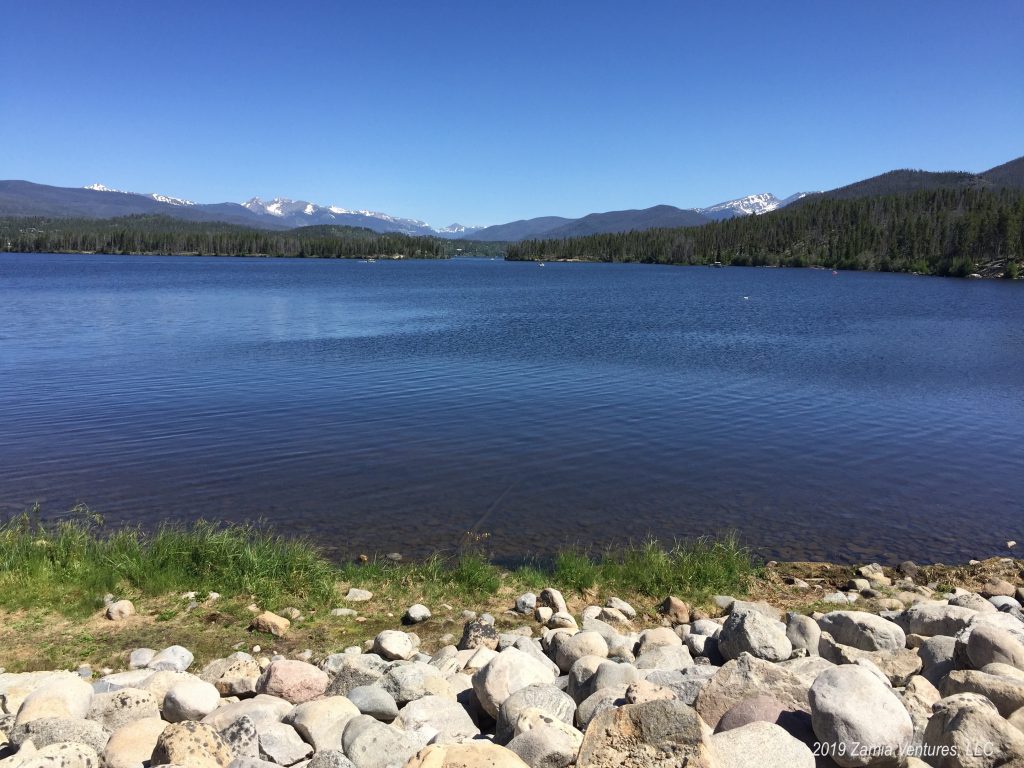
Our low-key campground was next to a boat ramp and within walking distance of several trails leading right into the national park. We explored the East Shore Trail, which is a small section of the Continental Divide National Scenic Trail. This relatively flat trail took us along the western edge of the national park and the eastern shore of Shadow Mountain Lake. It was fun to watch geese floating by on the crystal-clear lake (this explained all the weird honking we heard at our campsite), and see deer wandering through the forest.
The wildlife highlight of this hike was catching a glimpse of a large bull moose meandering north along the lakeshore, nibbling on various trees and shrubs as he went. From our vantage point on the trail, it was hard to get a clear view since the forest was fairly dense and the moose seemed to be knee-deep in the lake, but it was still fun seeing him pull down branches and strip off the tender young leaves. On our return along the same trail, we were really focused on scanning the lakeshore foliage to catch another glimpse of the moose. In fact, we were so focused on the shore that we rounded a corner on the trail and realized to our horror that the huge animal was standing right on our trail, not 25 feet in front of us. Luckily he was not startled, and just continued ambling up the hill into the park while we backed slowly down the trail and attempted to quell our racing hearts. Sadly, by the time we regained our senses the moose had moved along so it’s pretty hard to pick out the animal in the few photos we got.
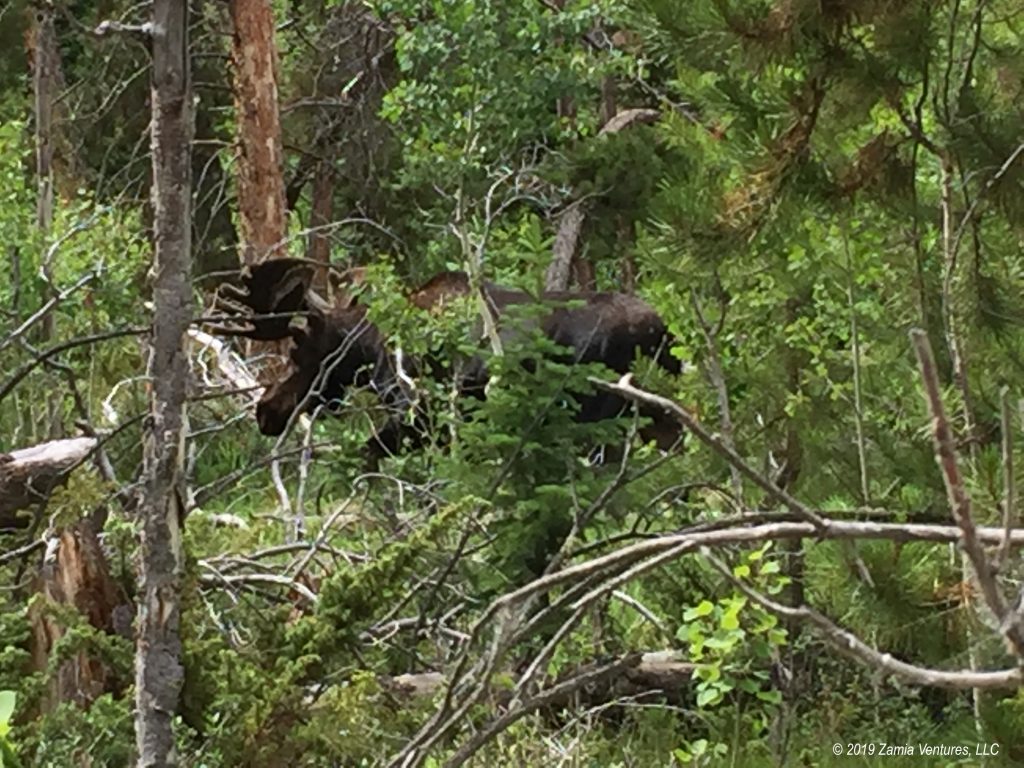
We also took a hike directly from our campground up the mountain to the (now derelict) Shadow Mountain Fire Lookout Tower. We ended up turning back before the tower in lieu of doing the extremely steep upper section, but still enjoyed a 8-mile round trip hike. In places where the pine forest has succumbed to bark beetle infestations, the open areas provided great views over the surrounding lakes.
Colorado Headwaters
The key water feature of the Kawuneeche Valley is the Colorado River, which has its headwaters at the northern end of the valley. Here, the Colorado is not yet the menacing and turbulent torrent that carved the Grand Canyon and numerous other geological features across the Four Corners area. Instead, it meanders through braided pathways and moistens a broad, grassy valley. This is ideal habitat for herbivores like moose, elk, and deer, and they were abundant.
One day we hiked up along the Colorado River to the site of a former mining town, on the Lulu City Trail. Once again we had frequent sightings of deer, and also spotted a group of yellow-bellied marmots residing in a large rock field, where they were well camouflaged. The former town site is now a lovely meadow filled with dandelions and other wildflowers, situated along the shallow and crystal-clear waters of the upper Colorado River. It was a restful place to take a break before heading back to the trailhead. On the way back we had yet another exciting wildlife encounter. We were within half a mile of the trailhead when we saw a cluster of hikers standing on one end of a small bridge. As we rounded the corner, it was obvious why they all stopped — there was a bull elk just on the other side of the bridge grazing on the lush grass next to the trail. This big fellow was not off in the forest; he was just a few feet from the trail. So despite the fact that it was starting to rain, we waited around until he got bored and moved on so that we could safely pass by and finish our hike.
Big Meadow
Our final hike was from the Green Mountain Trailhead to the Big Meadow, and then along the perimeter of the meadow until we decided to turn back. We basically traversed the first several miles of this trail. The hike featured a consistent uphill climb toward the Big Meadow alongside a creek with a mossy, fairy garden appearance. The problem with mossy fairy gardens is that they are perfect breeding grounds for mosquitoes, and this hike turned out to be our first occasion to use bug spray in 2019. I guess we can’t complain too much, since we made it all the way to the middle of July before breaking out the OFF. No doubt the snow and cold temperatures we experienced until after Memorial Day helped control the population of these annoying bloodsuckers.
One goal of our hike to Big Meadow was to see moose, and we quickly located our quarry. A calf and mama were grazing placidly on one edge of the meadow. By the time we hiked up to that end of the meadow, they were working their way into the forest and crossed the hiking trail just ahead of us. While the calf bumbled along through the underbrush making a racket, its mom moved with ninja-like silence through the dense forest. We kept a very careful eye on her to ensure we didn’t get between mom and calf, but like all the large animals we encountered in RMNP the moose really didn’t pay much attention to us so long as we kept our distance.
With good hiking and frequent wildlife encounters, we found the western side of Rocky Mountain National Park to be just as impressive and enjoyable as the more popular eastern side. In addition to all the animals mentioned already, we saw a pine marten, numerous chipmunks and squirrels, and countless forest birds including several new-to-us species. It was a perfect complement to the rugged alpine views of the prior week, and of course having to share the trails with far fewer other visitors made it even more special.
Next we head to the Steamboat Springs area for more hiking and mundane-but-necessary tasks like laundry and grocery shopping.

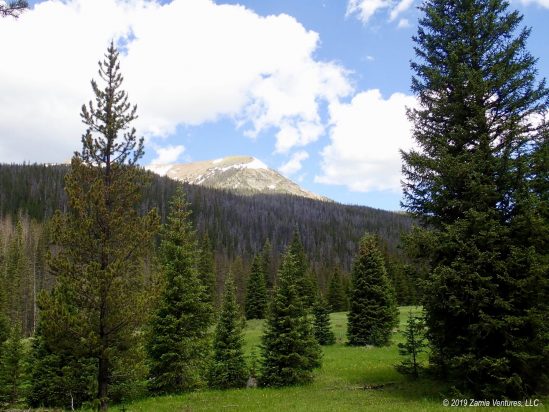
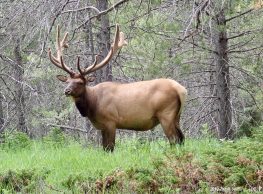
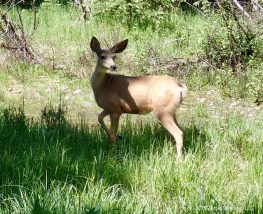
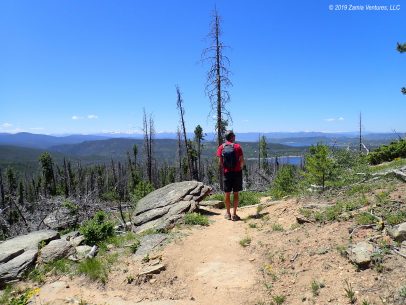
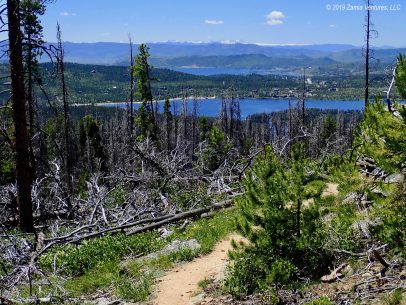
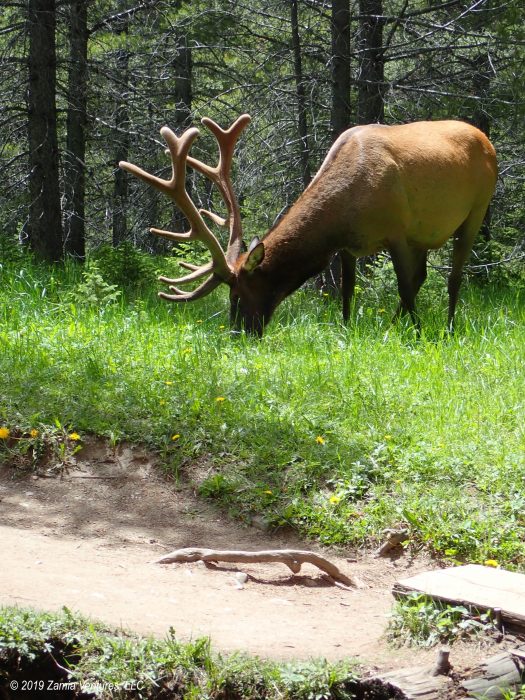
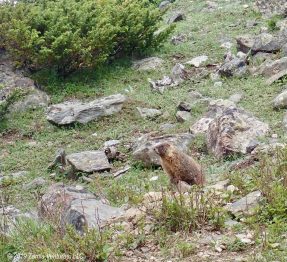
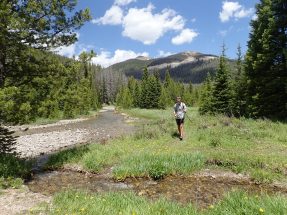
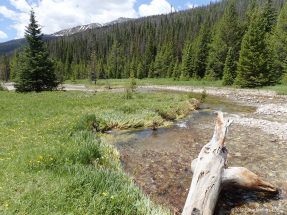
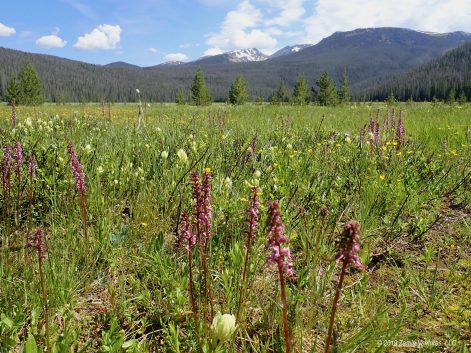
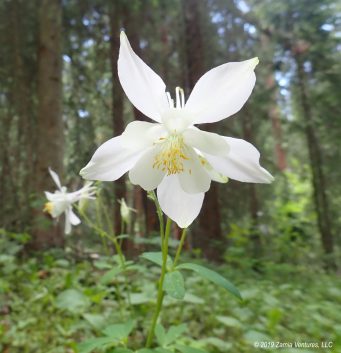
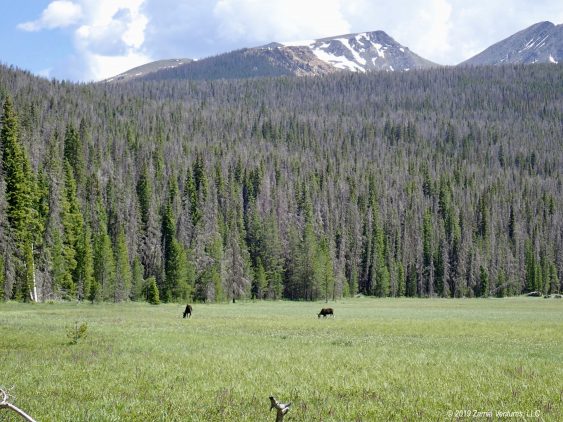
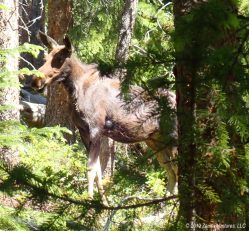
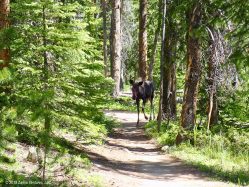
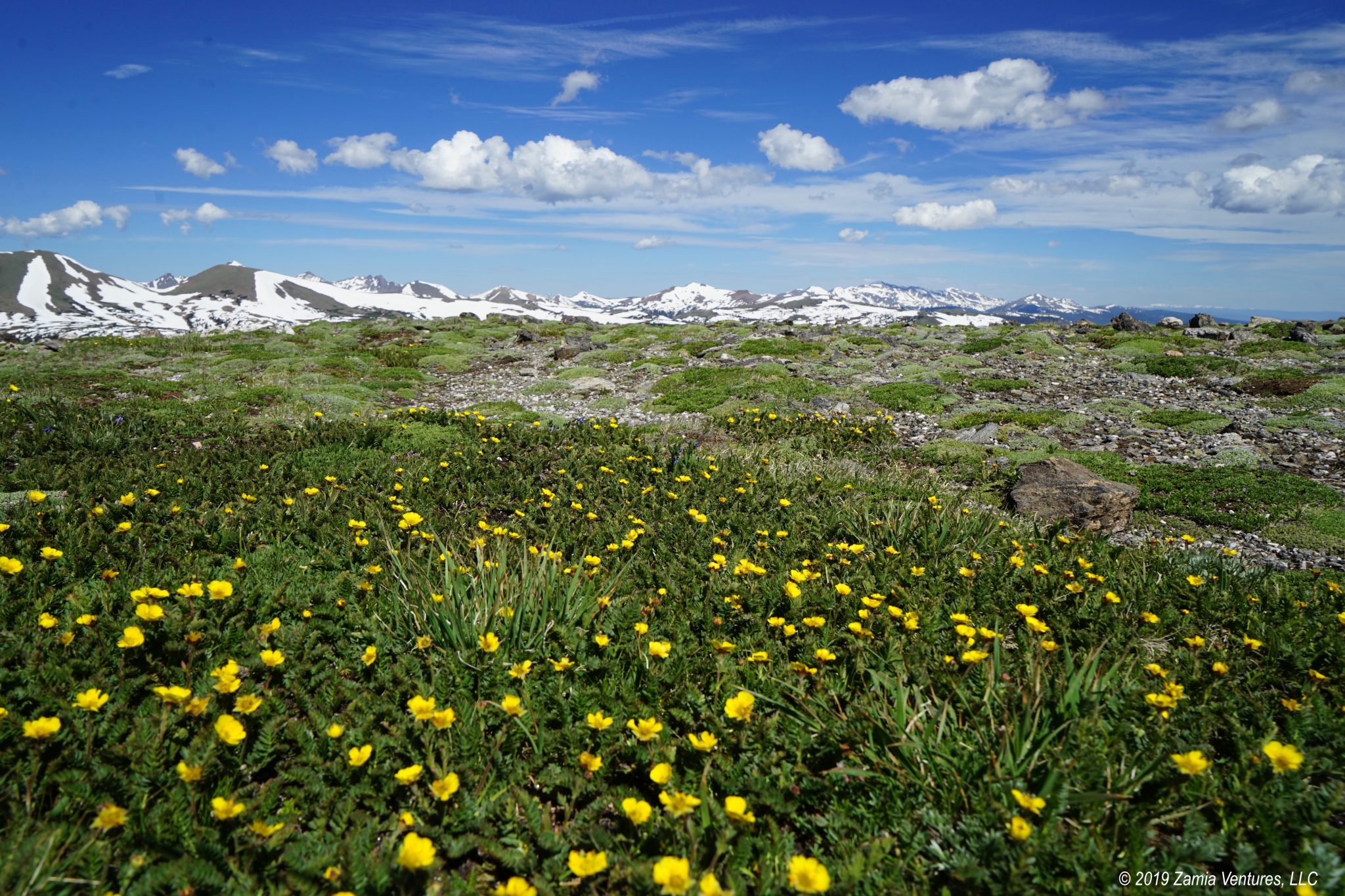
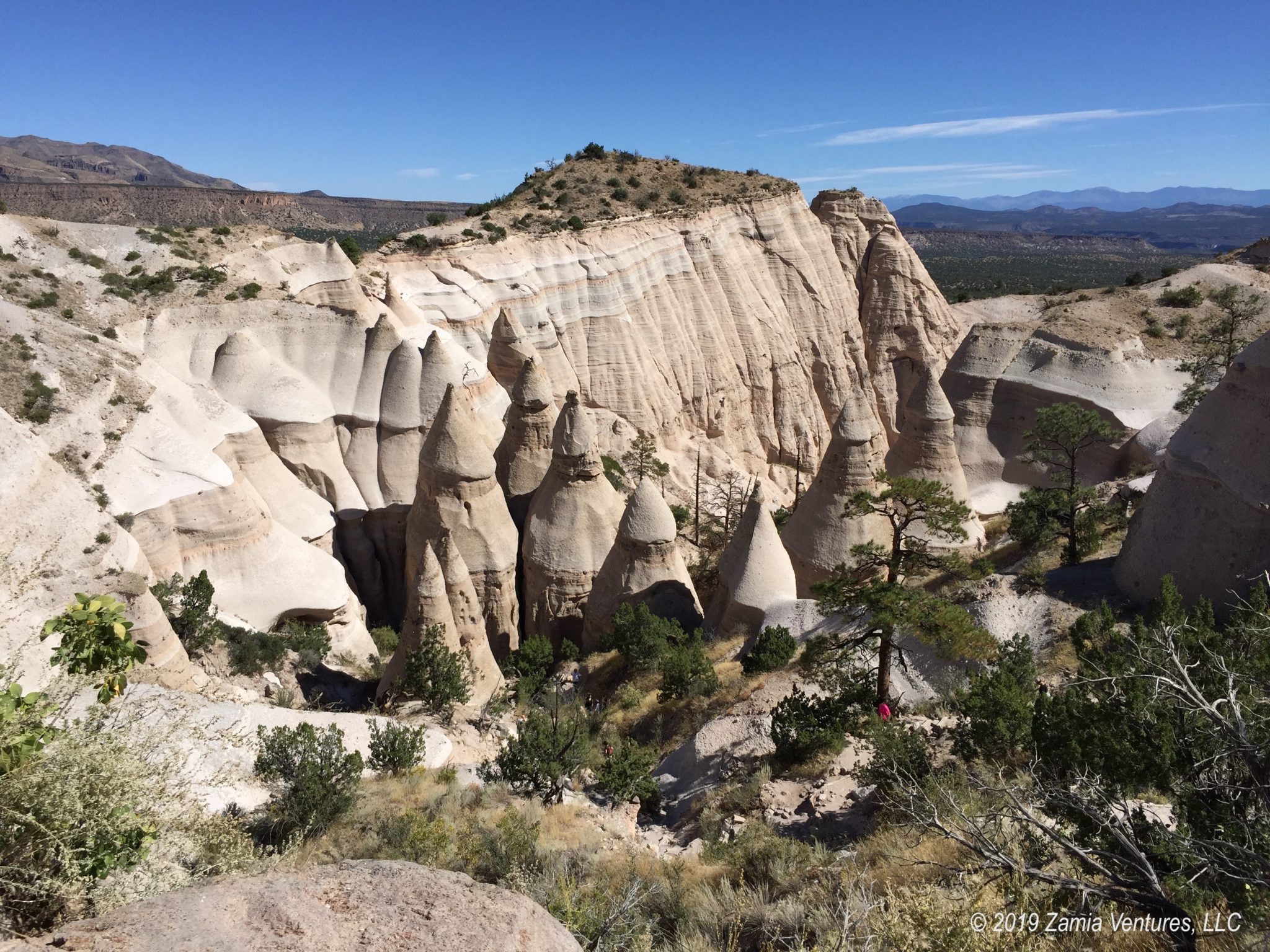
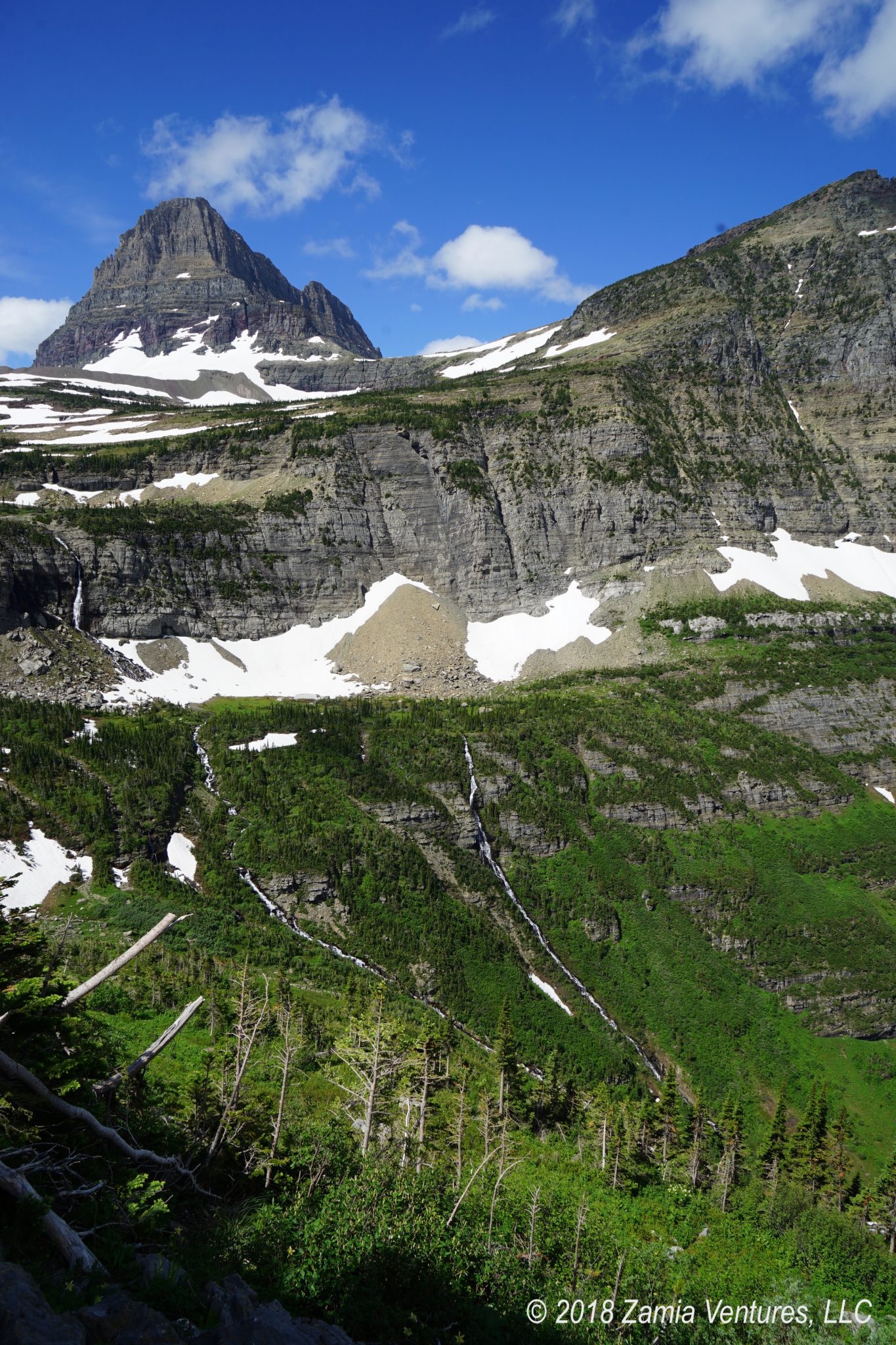
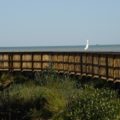
Gorgeous landscapes and up close viewing of spectacular wildlife. It doesn’t get much better than that… until you tell me you also didn’t have to use bug repellent until mid July. Now I’m really jealous… You guys are definitely making up for your questionable weather luck this spring. Hope it keeps going for you!
It does appear that the weather experiences are evening out for us — spring was rough, but summer has been pretty great so far.
Moose!! Still on our list, and we’re hoping that this will be THE year for us to finally spot the elusive critters. I can only imagine how “exciting” it was for you to round the corner and encounter that big guy on the trail! Exciting (and scary, too) to see a young one because as you said, you don’t want to get between mama and baby.
What were some of the new-to-you bird species? Your bird-loving friends want to know. 🙂
Speaking of bug repellent, have you tried Repel? It works great for us and uses essential oils instead of toxic chemicals.
I am keeping my fingers crossed that you will have plenty of (safe) moose encounters. If not, may I recommend Colorado and/or Montana for a future summer destination? We saw them frequently at Glacier last summer, and they are obviously abundant here in Colorado.
The problem with new bird species is the ID — I think we saw juncos, based on the rusty patches on the back and the noticeable white feathers in the tail, but it’s hard to be sure. We also saw what I think was Clark’s nutcracker but might have been grey jays. When they are moving fast it’s hard for us to get a solid view of them.
We’ll have to check out the bug spray you recommend. It’s mostly for Ken — he is the mosquito magnet. When he is nearby, I don’t even need spray because I know he will attract all the bugs. 🙂
I understand the challenges of identifying birds on the fly, LOL. I always think identifying plants should be easier…but they can be challenging, too, even though they don’t fly away!
So true!!
Critters! My favorite! Except for moose (which we did see in eastern WA) it all reminds me of where we used to live with elk, deer, bear, bobcat, etc. in our backyard regularly in western WA. It is always exciting to see them wherever you are, and makes me miss old-home just a little. Your post has us looking forward to visiting ROMO some day!
ROMO certainly impressed us with the wildlife on both sides of the park — the animals are doing very well in the park, which was a delight for us. This is particularly true because the park has so many large animals. As much as we appreciate small animals like birds and reptiles, we get most jazzed about the big stuff like elk and moose, especially when we have fairly close encounters.